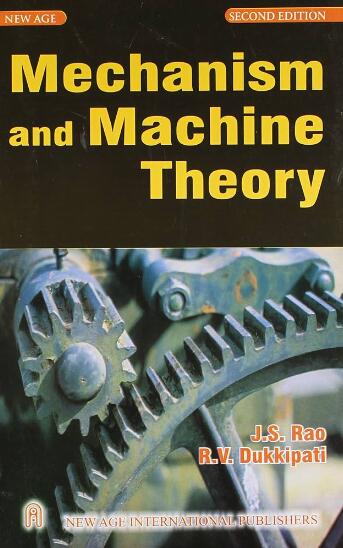Integrated optimization synthesis of linkage mechanism structures and dimensions free from kinematic defects
IF 4.5
1区 工程技术
Q1 ENGINEERING, MECHANICAL
引用次数: 0
Abstract
This paper presents a novel methodology for the integrated optimization synthesis of linkage mechanism structures and dimensions, utilizing a kinematic defect-free dyad comprising two bars with three revolute joints (3R dyad). The approach overcomes the challenges associated with designing single structure linkages, kinematic defects, and optimization issues common in traditional multi-bar mechanisms. By standardizing the parameterization of defect-free 3R dyads, this methodology facilitates the uniform mapping of structural and dimensional parameters into a consolidated design variable space, enabling simultaneous optimization of topological structures and dimensions—a significant advancement over traditional methods that address these aspects separately. Moreover, the proposed method fundamentally prevents kinematic defects by ensuring that all generated mechanisms inherently satisfy kinematic constraints throughout the optimization process, thereby eliminating the need for defect screening during or after optimization. The synthesis method for linkage structures, based on the 3R dyad and its unified dimension parameterization strategy, is detailed. To substantiate the proposed methodology, experimental tests were conducted on two six-bar mechanisms for path generation tasks and two eight-bar mechanisms for rigid-body guidance tasks. The outcomes confirm that the optimized linkage mechanisms precisely fulfill diverse motion requirements without kinematic defects. Additionally, the optimization design of a six-bar leg rehabilitation mechanism demonstrates the practicality and efficiency of this approach, further validating its superiority in real-world applications.
无运动缺陷连杆机构结构与尺寸的综合优化
本文提出了一种新的连杆机构结构和尺寸的综合优化方法,该方法利用由两个杆和三个转动关节组成的运动无缺陷二联体(3R二联体)。该方法克服了传统多杆机构在设计单结构连杆、运动缺陷和优化方面的挑战。通过标准化无缺陷3R二元体的参数化,该方法有助于将结构和尺寸参数统一映射到统一的设计变量空间中,从而实现拓扑结构和尺寸的同时优化——与分别处理这些方面的传统方法相比,这是一个重大进步。此外,该方法通过确保在整个优化过程中生成的所有机构固有地满足运动学约束,从根本上防止了运动学缺陷,从而消除了优化过程中或优化后缺陷筛选的需要。详细介绍了基于3R二元结构及其统一尺寸参数化策略的连杆结构综合方法。为了验证所提出的方法,对两个用于路径生成任务的六杆机构和两个用于刚体制导任务的八杆机构进行了实验测试。结果表明,优化后的连杆机构能准确地满足多种运动要求,且无运动缺陷。此外,六杆假肢康复机构的优化设计验证了该方法的实用性和有效性,进一步验证了该方法在实际应用中的优越性。
本文章由计算机程序翻译,如有差异,请以英文原文为准。
求助全文
约1分钟内获得全文
求助全文
来源期刊

Mechanism and Machine Theory
工程技术-工程:机械
CiteScore
9.90
自引率
23.10%
发文量
450
审稿时长
20 days
期刊介绍:
Mechanism and Machine Theory provides a medium of communication between engineers and scientists engaged in research and development within the fields of knowledge embraced by IFToMM, the International Federation for the Promotion of Mechanism and Machine Science, therefore affiliated with IFToMM as its official research journal.
The main topics are:
Design Theory and Methodology;
Haptics and Human-Machine-Interfaces;
Robotics, Mechatronics and Micro-Machines;
Mechanisms, Mechanical Transmissions and Machines;
Kinematics, Dynamics, and Control of Mechanical Systems;
Applications to Bioengineering and Molecular Chemistry
 求助内容:
求助内容: 应助结果提醒方式:
应助结果提醒方式:


